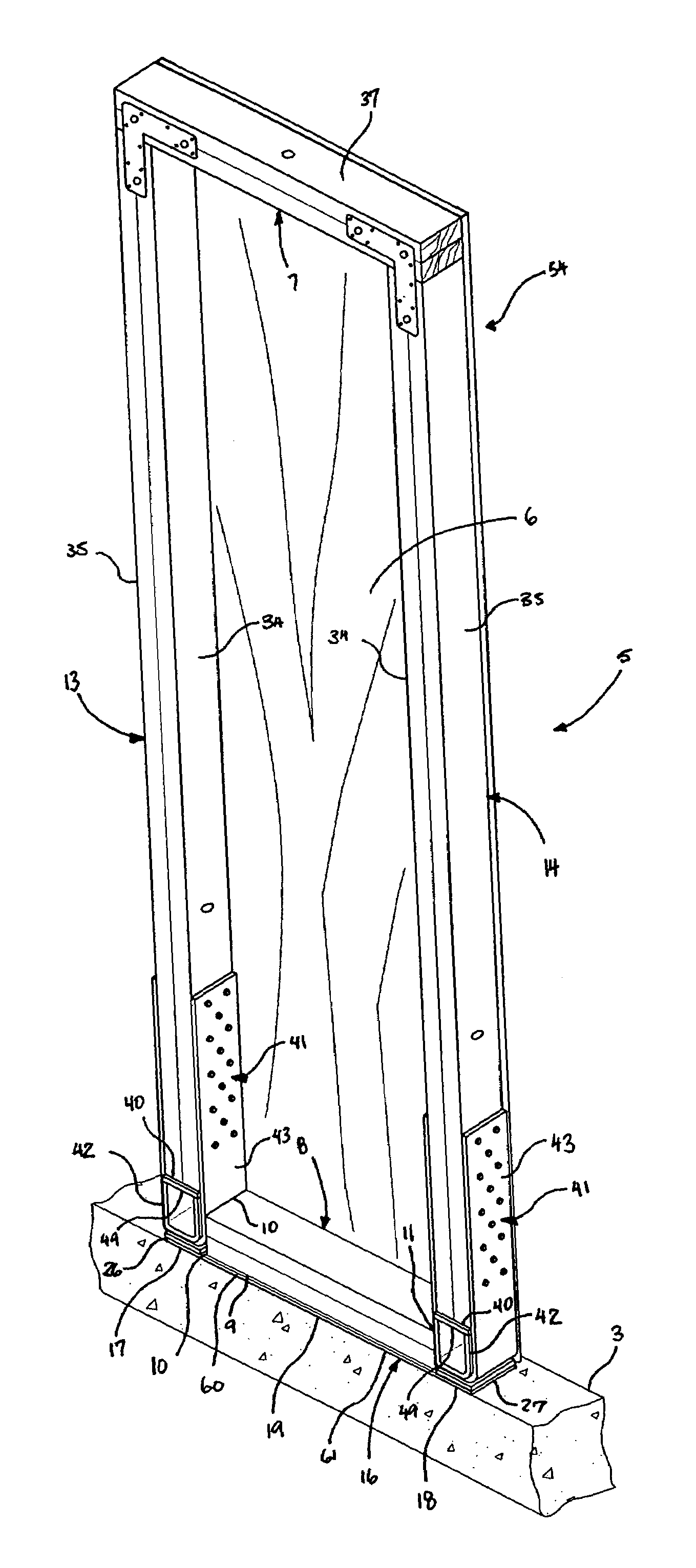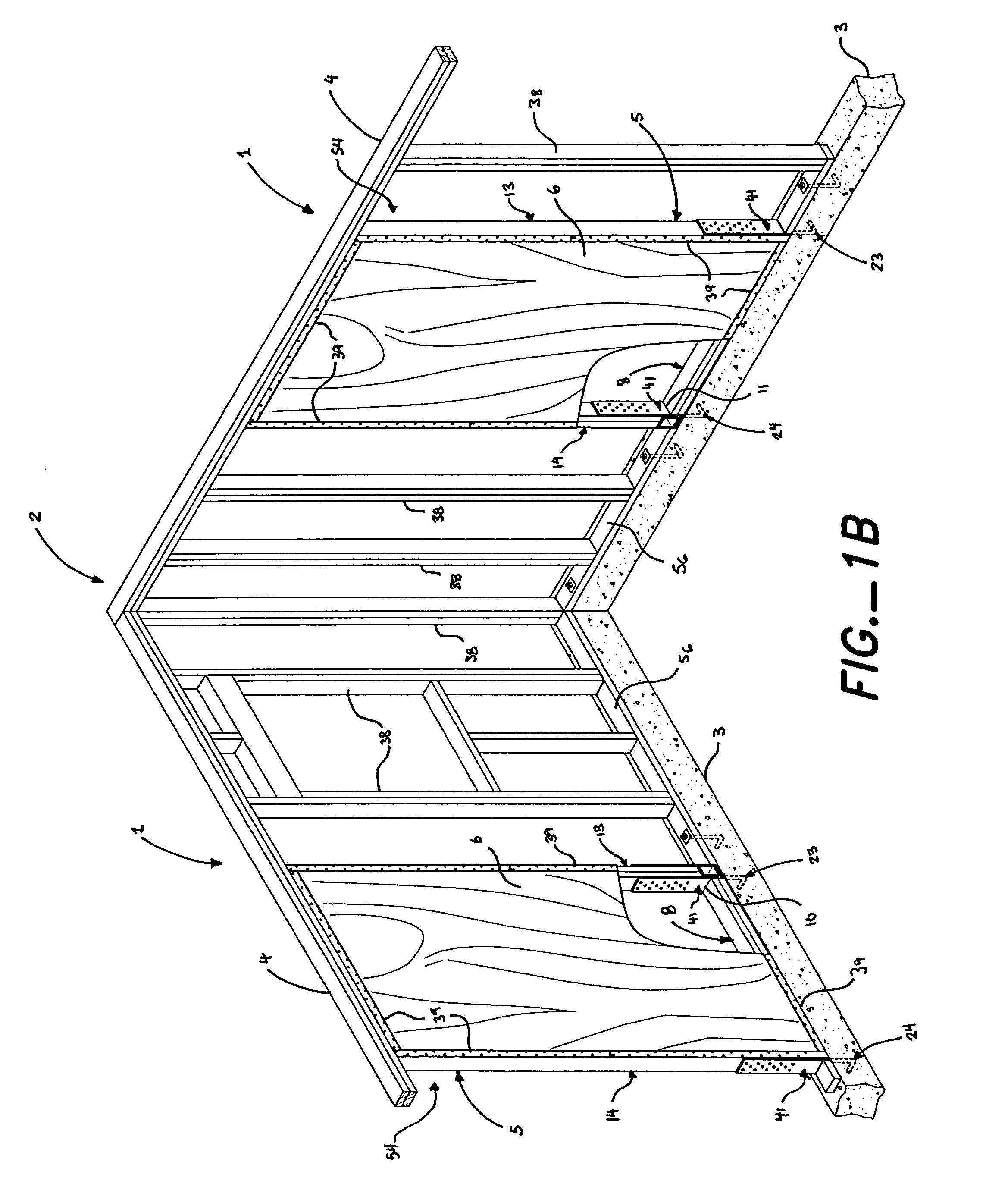Shear transfer plate
a transfer plate and transfer plate technology, applied in the field of improved connection, can solve the problems of ineffective resistance to uplift, failure of the sill, and inability to resist uplift, and achieve the effects of less expensive, enhanced ductility of the bottom strut connection, and greater deformation
- Summary
- Abstract
- Description
- Claims
- Application Information
AI Technical Summary
Benefits of technology
Problems solved by technology
Method used
Image
Examples
Embodiment Construction
[0058]As best shown in FIGS. 1A and 1B, preferably, the present invention is a wall 1 designed to resist lateral forces imposed on a building 2 incorporating that wall 1. The building 2 has an underlying structural component 3 supporting the wall 1 and a generally horizontal structural member 4, through which lateral shear forces are transmitted, surmounting the wall 1.
[0059]The wall 1 is typically a light wood-frame wall 1 in a light wood-frame building 2, but it could also be light-gauge steel, which is increasingly common particularly in areas where the cost of wood is high, either because the wood must be imported or because local weather conditions increase the cost of maintenance of wood-frame structures. Other structural materials are also possible. Lateral forces are typically those exerted by high winds or earthquakes, the former tending to be fairly consistent in the amount of force and its direction, the latter tending to be stronger, cyclical, and reversing direction. Wa...
PUM
 Login to View More
Login to View More Abstract
Description
Claims
Application Information
 Login to View More
Login to View More - R&D
- Intellectual Property
- Life Sciences
- Materials
- Tech Scout
- Unparalleled Data Quality
- Higher Quality Content
- 60% Fewer Hallucinations
Browse by: Latest US Patents, China's latest patents, Technical Efficacy Thesaurus, Application Domain, Technology Topic, Popular Technical Reports.
© 2025 PatSnap. All rights reserved.Legal|Privacy policy|Modern Slavery Act Transparency Statement|Sitemap|About US| Contact US: help@patsnap.com



